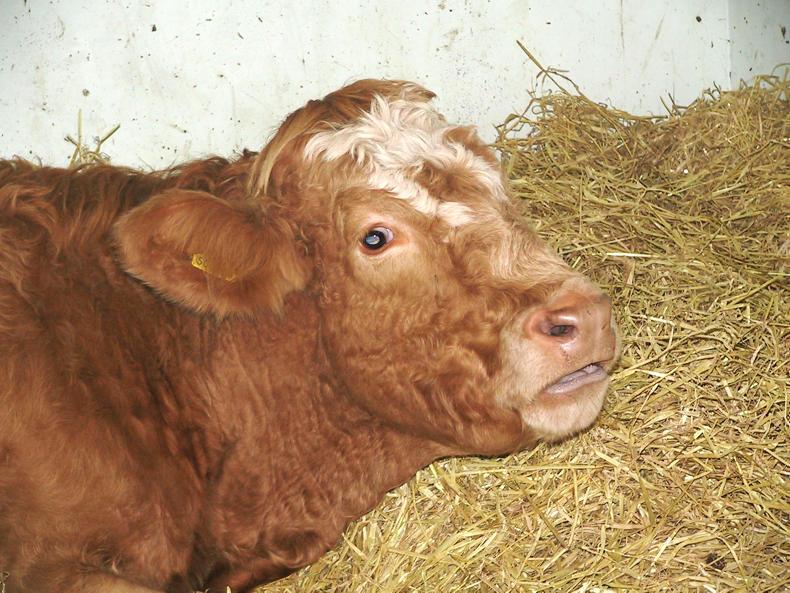A disease most common in calves and young stock, the disease may also occur in older cattle that have had minimal prior exposure to the parasite and or recently moved on to heavily contaminated pasture.
Cause
Lungworm has become a much greater problem in the past number of years due to the increased rainfall which favours the survival of the parasite on pasture. In fact, there have been many cases of patent lungworm infections affecting adult cows at pasture, with fatalities in some cases. Apart from high rainfall, other risk factors that facilitate the spread of lungworm include overstocking, cattle with diarrhoea, and older pastures where the fungus pilobolus is present. This fungus helps spread the parasite and is present in high numbers on the sites of old and new dung pats.
Lungworm larvae are ingested by cattle directly from the pasture and they migrate from the intestinal tract to the lungs. After a variable period of seven to 25 days, the lungworm mature to adults and produce eggs which are coughed up, swallowed, and passed in the dung as larvae. The adult worms survive in the airways of the lung for approximately seven weeks, by which time immunity develops, and there is self-cure because most worms die or are discharged. Of course, the level of challenge and worm burden will determine the severity of clinical signs seen on the farm.
Symptoms
Depending on the level of pasture contamination and the challenge to the animal, different severities can be seen. The acute form of lungworm infection mainly occurs in young calves one to two weeks after being moved on to heavily contaminated pasture, and many calves will be affected simultaneously. The predominant symptoms are coughing and the sudden onset of rapid shallow breathing with a marked abdominal component. This can lead to reduced thrive by the animal. Accompanying this, although not always present, is a deep cough and a fever that may reach 41°C (105°F). Acute cases progress quickly, and death from progressive respiratory failure can occur in three to 14 days.
The more common sub-acute (less severe) form has a prolonged clinical course of three to four weeks. In these cases, the onset is also sudden, with an increased respiratory rate, frequent paroxysm bouts of coughing, and, in severe cases, an expiratory grunt. The body temperature is usually normal or only slightly elevated. There may be evidence of recent diarrhoea and affected animals of any age lose weight rapidly.
While the mortality rate is much lower in the sub-acute form, many affected animals are left with damaged lungs that result in laboured breathing for several months. Secondary viral and bacterial invasion is also quite common, further contributing to lung damage and leading to a chronic cough. Animals that continue to cough following treatment for lungworm do not necessarily still have patent infections, as it may be due to chronic lung damage. The dead lungworm larvae in the lung following treatment continue to act as an irritant in the lung, leading to the chronic cough.
A very important component to lungworm infections in recent years is that of reinfection syndrome. In this case, adult cows with immunity that are exposed to massive numbers of infective larvae develop respiratory disease solely because of their immune reaction, ie there is an exaggerated immune response in these animals. Affected cows will show all the signs of lungworm infection commonly with marked respiratory effort, but no eggs will be released in the course of the disease and no adult worms are found in the lungs on post-mortem examination.
Treatment
Most modern broad-spectrum anthelminthics are active against all stages of lungworm. However, killing of the parasite does not resolve the damage already present in the lungs of severely affected animals. Occasionally animals may develop severe immune reactions to dead lungworm, with worsening of clinical signs following treatment. There are zero-milk-withdrawal products that may be used in lactating dairy cows during the summer if disease is suspected or diagnosed but you should check with your vet before using any of these products.
Prevention and control
Much of the prevention rests on pasture management, such as preventing overcrowding and avoiding continuous use of the same pasture for young stock. Wet, swampy pastures should be used for grazing only the adult (immune) animals. Calves should be wormed regularly during their first grazing season, without totally preventing exposure to parasites so that immunity can be developed early in life.
If calves are not exposed to enough worms to develop immunity in their first grazing season, then they will be very susceptible to full patent lungworm infections in their second grazing season. There is a vaccine against lungworm available, but uptake is low.






 This is a subscriber-only article
This is a subscriber-only article









SHARING OPTIONS: